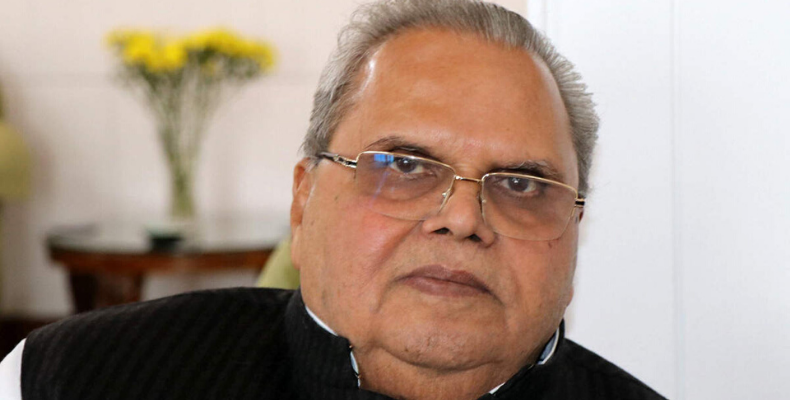On October 25th, former Governor of Jammu and Kashmir, Satya Pal Malik, was declared the new Governor of Goa. The Governor who presides for a term of 5 years, was sworn in yesterday, November 3, by the Chief Justice of the Bombay High Court, Pradeep Nandrajog at the Raj Bhavan. Satya Pal Malik was preceded by Mridula Sinha who served as Governor of Goa from August 2014 to October this year. While the Chief Minister does a lot of the heavy in the state, the Governor has a number of responsibilities as well. With our new Governor sworn in, now would be a great time to find out more about him, and what the roles and responsibilities of Governor entail.
Satya Pal Malik
Born on July 24, 1946, Satya Pal Malik hails from the village of Hisawada in Baghpat, Uttar Pradesh. Following a law degree from Meerut College, he made his foray into politics with his first prominent stint being a member of the Uttar Pradesh Legislative Assembly during 1974-77. Post that, he represented Uttar Pradesh in Rajya Sabha from 1980-86 and 1986-89, and was a member of the 9th Lok Sabha from Aligarh, from 1989 to 1991, as member of the Janata Dal. He took up the office of Governor of Bihar from October 2017 to August 2018 and on 21 March 2018 he was given additional charge to serve as Governor of Odisha up to 28 May 2018. Governor Malik’s latest official post was as Governor of Jammu and Kashmir from August 2018 to October 2019. It was during his tenure that the decision to abrogate Article 370, which gave special status to J&K, was taken in August 2019.
The roles and responsibilities of Governor of Goa
The main role of the Governor of Goa is as nominal head and representative of the President of India. The post of Governor is appointed by the President of India himself, and a typical Governor’s tenure lasts 5 years. During his or her tenure as Governor, there are a number of powers and functions and make up the responsibilities of the office of Governor of Goa. Of these, the most important are:
- Executive powers related to administration, appointments and removals.
- Legislative powers related to lawmaking and the state legislature, that is Vidhan Sabha or Vidhan Parishad.
- Discretionary powers to be carried out according to the discretion of the Governor.
In addition to these, there are also Ex Officio Powers that are conferred on the Governor of Goa, and these are as follows:
- The Governor is the Chancellor of the Goa University and exercises powers delegated under the Goa University Act, 1984 and the Statutes of the University.
- The Governor is the ex officio President of the Indian Red Cross Society, Goa Branch and has the powers to appoint the Chairman, Hon. Secretary, etc.
- The Governor is the President of the Goa State Environment Protection Council, which is an Advisory Body, set up by the Government of Goa. The Council consisting of Government Authorities and the NGOs engaged in environmental and the related areas meets once in six months and deliberates on various issues on the environment and ecology of the State.
- The Governor is the Chairman of the Special Fund for Rehabilitation and Reconstruction of Ex-Servicemen and Widows.
It’s interesting to note that since the first Portuguese Governor-General in Goa, Francisco de Almeida in 1505, and the last Manuel Antonio Vassalo E Silva who left office in 1961, there have been a total of 163 Governor Generals. As a Union Territory along with Daman and Diu from 1961 to 1987, Goa had 13 Lieutenant Governors, the last being Gopal Singh who presided from September 1984 to May 1987. After Goa became a full-fledged state of the Indian Union in 1987, Gopal Singh continued his tenure as Goa’s first Governor till July 1989. Since then, Goa has had 17 Governors.\
If you found this article interesting, consider sharing it. Also, let us know your thoughts by starting a conversation in the comments section below.


